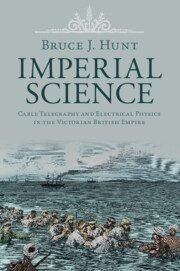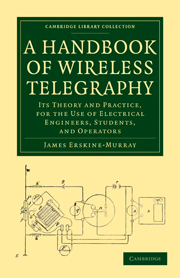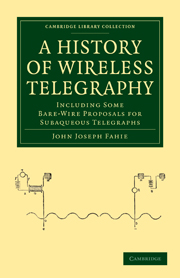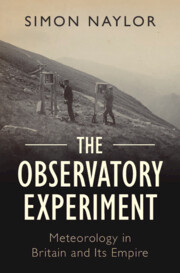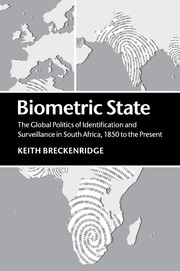Imperial Science
In the second half of the nineteenth century, British firms and engineers built, laid, and ran a vast global network of submarine telegraph cables. For the first time, cities around the world were put into almost instantaneous contact, with profound effects on commerce, international affairs, and the dissemination of news. Science, too, was strongly affected, as cable telegraphy exposed electrical researchers to important new phenomena while also providing a new and vastly larger market for their expertise. By examining the deep ties that linked the cable industry to work in electrical physics in the nineteenth century - culminating in James Clerk Maxwell's formulation of his theory of the electromagnetic field - Bruce J. Hunt sheds new light both on the history of the Victorian British Empire and on the relationship between science and technology.
- Examines how telegraph technology and electrical physics interacted in the nineteenth century
- Provides a fresh perspective on the development of the Victorian British Empire
- Sheds new light on the relationship between science and technology
Reviews & endorsements
'Lucid, brilliantly well-informed and replete with fresh insights, Imperial Science is destined to be an indispensable classic. Bruce J. Hunt gives us a rich account of how radical developments in cable telegraphy and the theory of electromagnetism were intertwined, with profound consequences for the everyday lives of millions of people all over the world.' Graham Farmelo, Churchill College, University of Cambridge
'Well before the internet, information flowed through British submarine cable telegraphy. Bruce J. Hunt's fascinating study explores how physicists and telegraph engineers managed competing methods and demands to create this first global communications system. These nerves of empire transformed international affairs, accelerated commerce, provided rapid access to news, and revolutionized physics.' Kathryn Olesko, Georgetown University
'With impressive skill, Bruce J. Hunt brings together the commercial and engineering practices of Victorian telegraphy with the construction of the new physics of electromagnetic field theory. In so doing, he powerfully reinvigorates the history of nineteenth-century physics as a major academic arena grounded upon, but not determined by, imperial engineering and technology.' Crosbie Smith, University of Kent
'Illustrated with period images and impeccably referenced, Hunt's remarkable, scholarly text will encourage nonspecialist readers to engage … Highly recommended.' E. J. Delaney, Choice Connect
'In this important book our foremost historian of British telegraphy and Maxwellian electromagnetic field theory gives a compelling account of the intimate relation of telegraph engineering and mathematical physics over some forty years.' M. Norton Wise, Metascience
'Hunt's book contributes to a historiography which already consists of excellent works ... The added value of the book is in providing evidence, as no other authors have done so far, of the technological steps leading to the great telegraph connection across the Atlantic and later around the world. Hunt also makes the various themes understandable to non-experts, building a compelling and well-illustrated narrative.' Andrea Giuntini, Technology and Culture
Product details
No date availableAdobe eBook Reader
9781108906050
0 pages
Table of Contents
- Prologue. 'An imperial science'
- 1. 'An ill-understood effect of induction': telegraphy and field theory in Victorian Britain
- 2. Wildman Whitehouse, William Thomson, and the first Atlantic cable
- 3. Redeeming failure: the joint committee investigation
- 4. Units and standards: the ohm is where the art is
- 5. The ohm, the speed of light, and Maxwell's theory of the electromagnetic field
- 6. To rule the waves: Britain's cable empire and the making of 'Maxwell's equations'
- Epilogue. Full circle.

